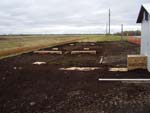However, the justification is not as clear for the basis for specific environmental triggers that indicate when water diversions should be reduced.
The Mobile Bay National Estuary Program has contracted with Gresham, Smith and Partners to facilitate a coalition to address watershed management issues in Baldwin County, Ala.
EPA is proposing that more industrial sectors should report their greenhouse gas emissions in 2012.
Siemens Water Technologies will provide disinfection and onsite services to resort pools, fountains and theme parks in Lake Buena Vista, Fla.
Exposure to the pesticide, which is used in the agricultural industry, is associated with early childhood developmental delays, according to a Columbia University study.
Five months after the Clean Water Act workshop, the Water Environment Federation and Duke University release a report that summarizes potential solutions to achieving long-term water quality goals.
Utah State University lab and Purestream Technology are creating an oil and gas well head solution for air emissions and wastewater.
Governor Ritter and lawmakers expect broad-based state plans will take care of regional haze and potentially unpopular federal mandates.
EPA will begin addressing contaminants in groups and has identified four carcinogenic compounds that merit stricter regulation.
Groups and individuals were chosen for outstanding achievement in boosting awareness of water quality issues.

For simple, low-cost solutions for wastewater treatment, Submerged Attached Growth Reactors downstream of primary lagoons provide a practical means to comply with nutrient rules, even in cold climates.
- By Mark O. Liner, P.E., Merle Kroeker, P.E.
EPA's handbooks target regions and states responsible for enforcing the Safe Drinking Water Act and offer guidance on public notification rule compliance.
The state agency implemented erosion controls, conducted inspections, maintained records and also paid a $100,000 penalty related to activities on Route 22/12 in Lake Zurich.